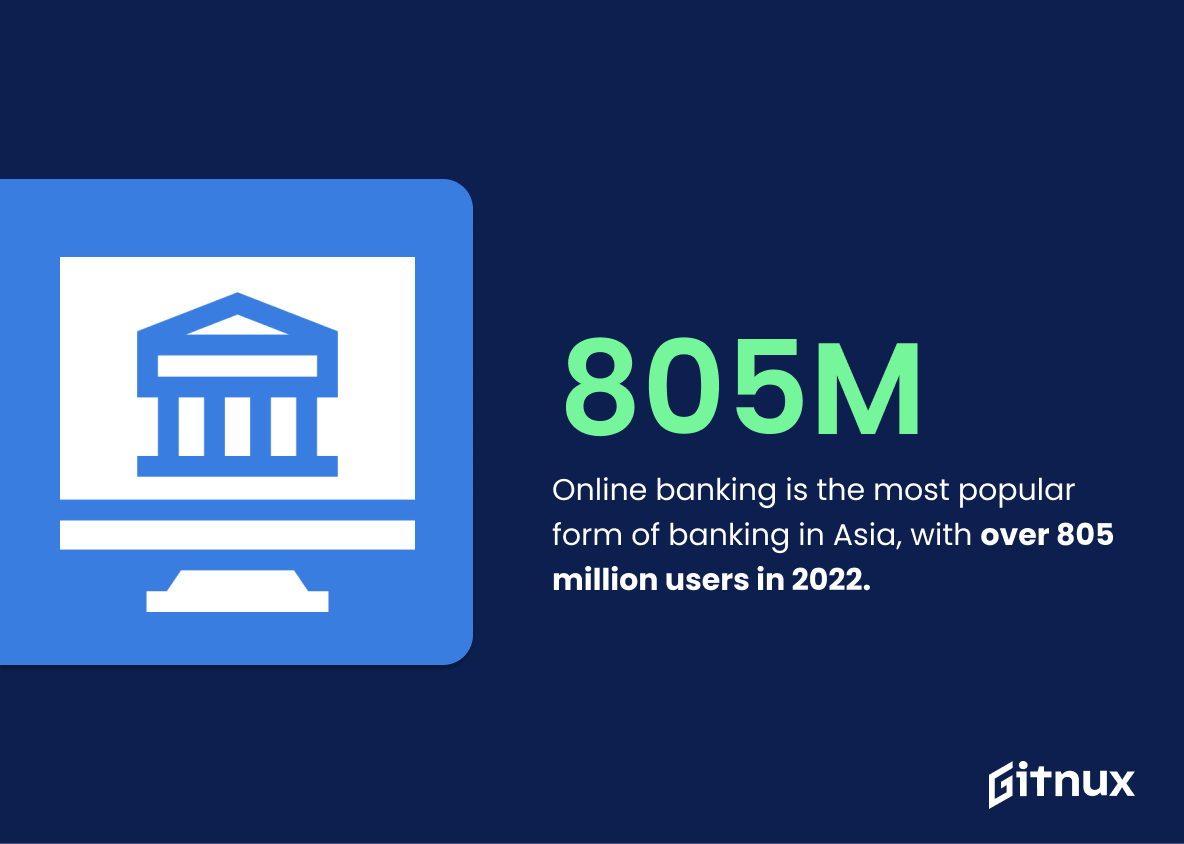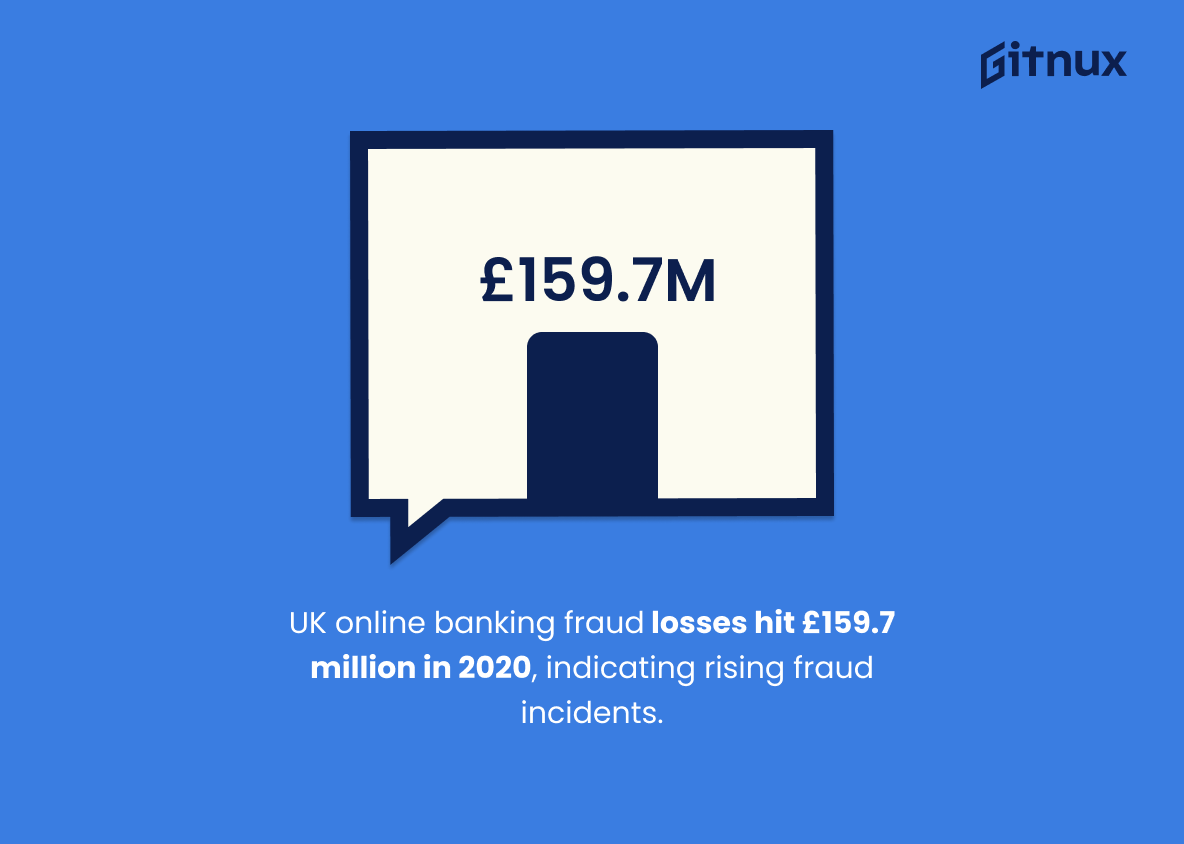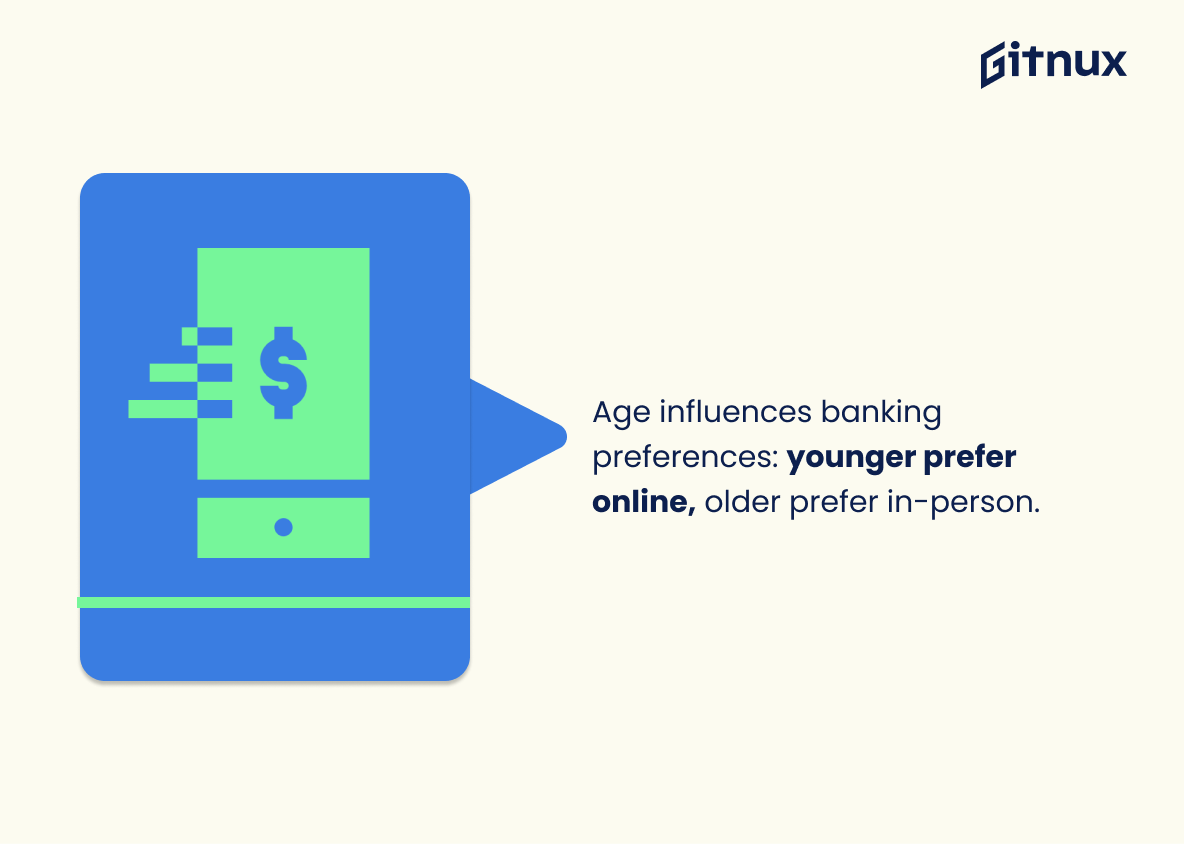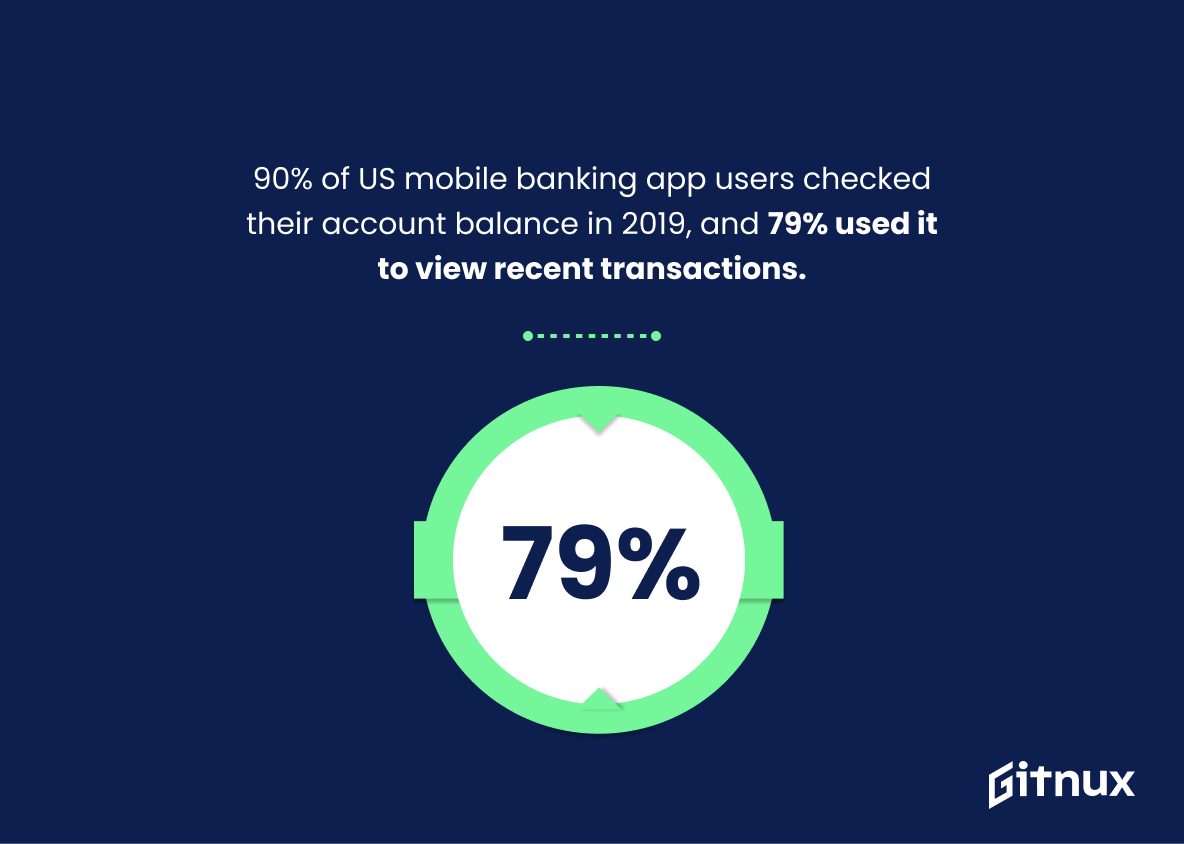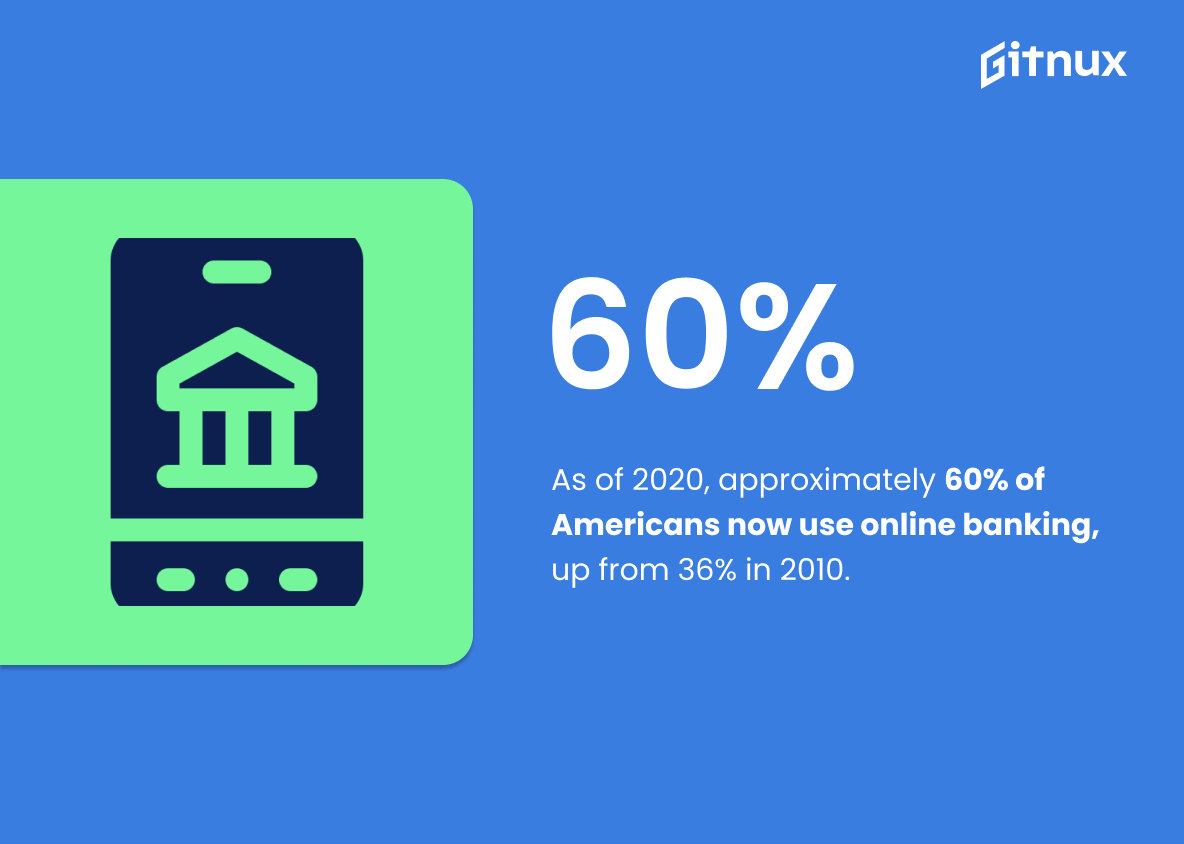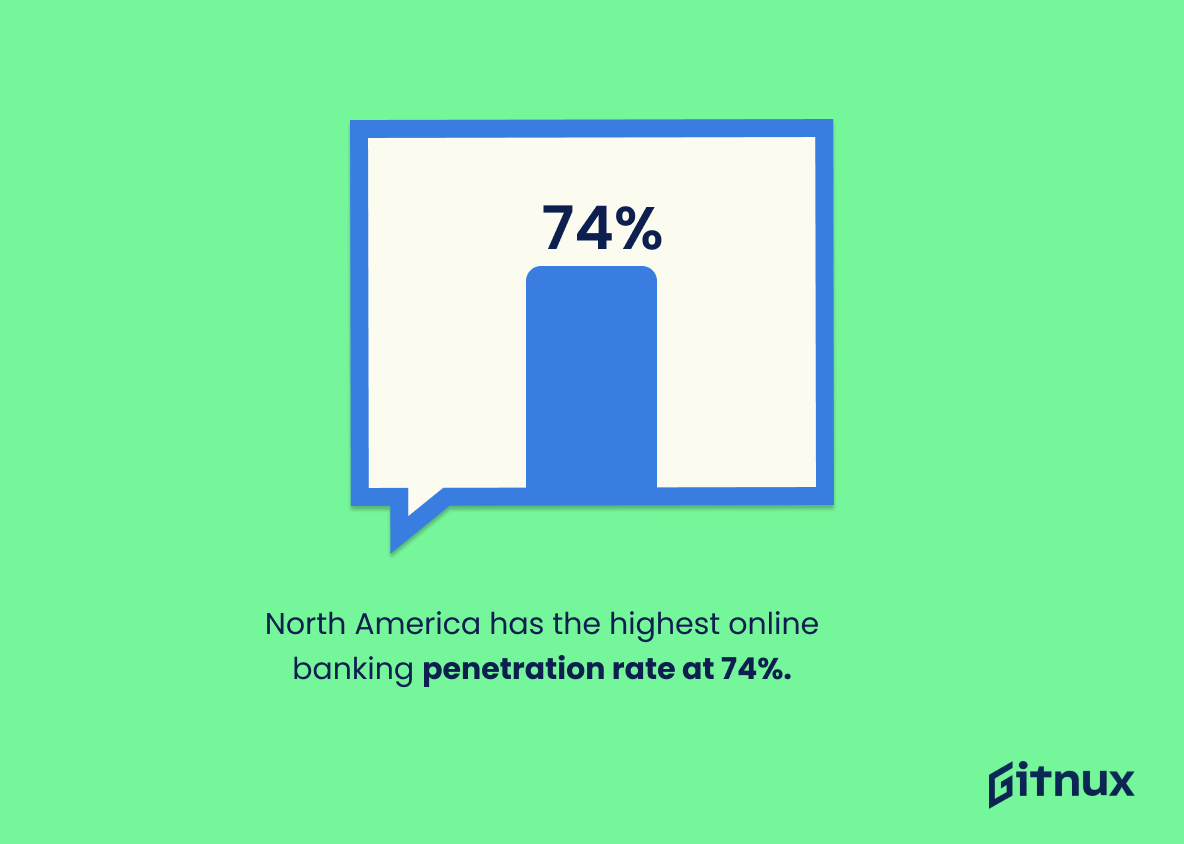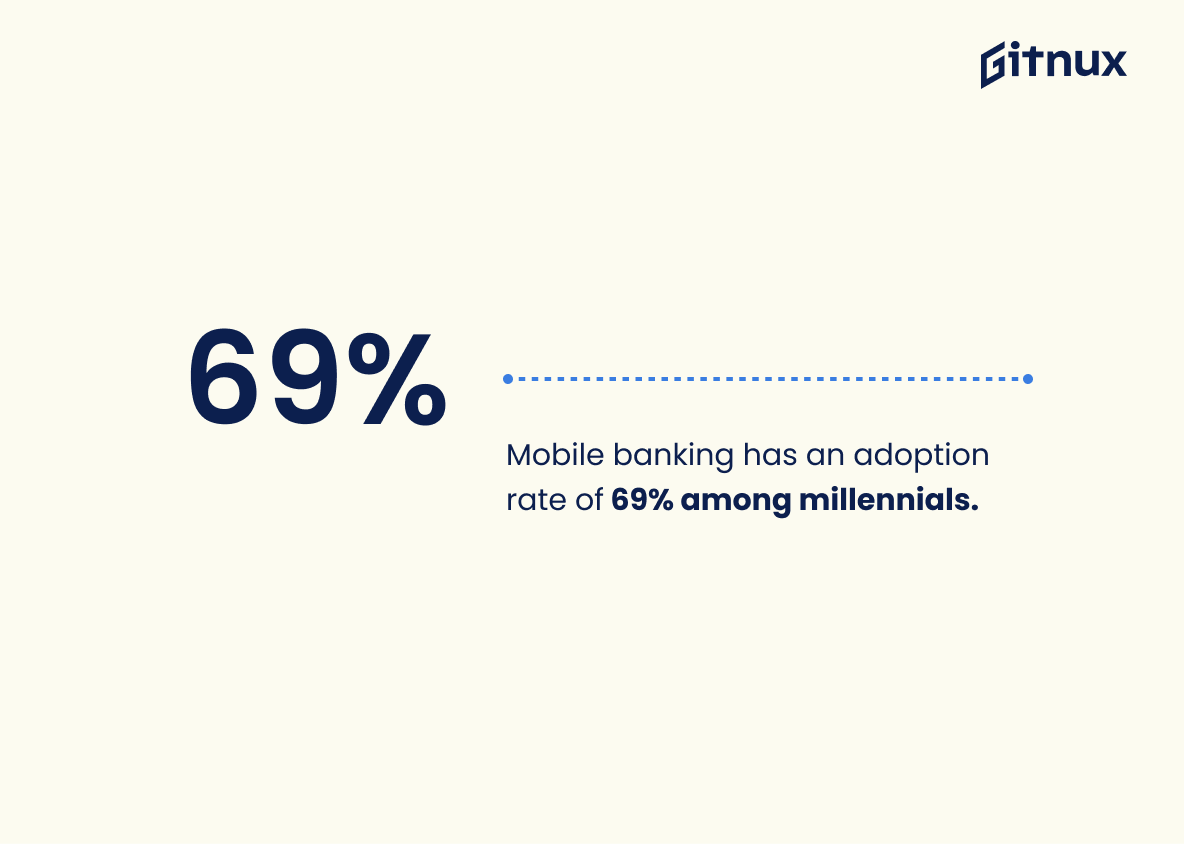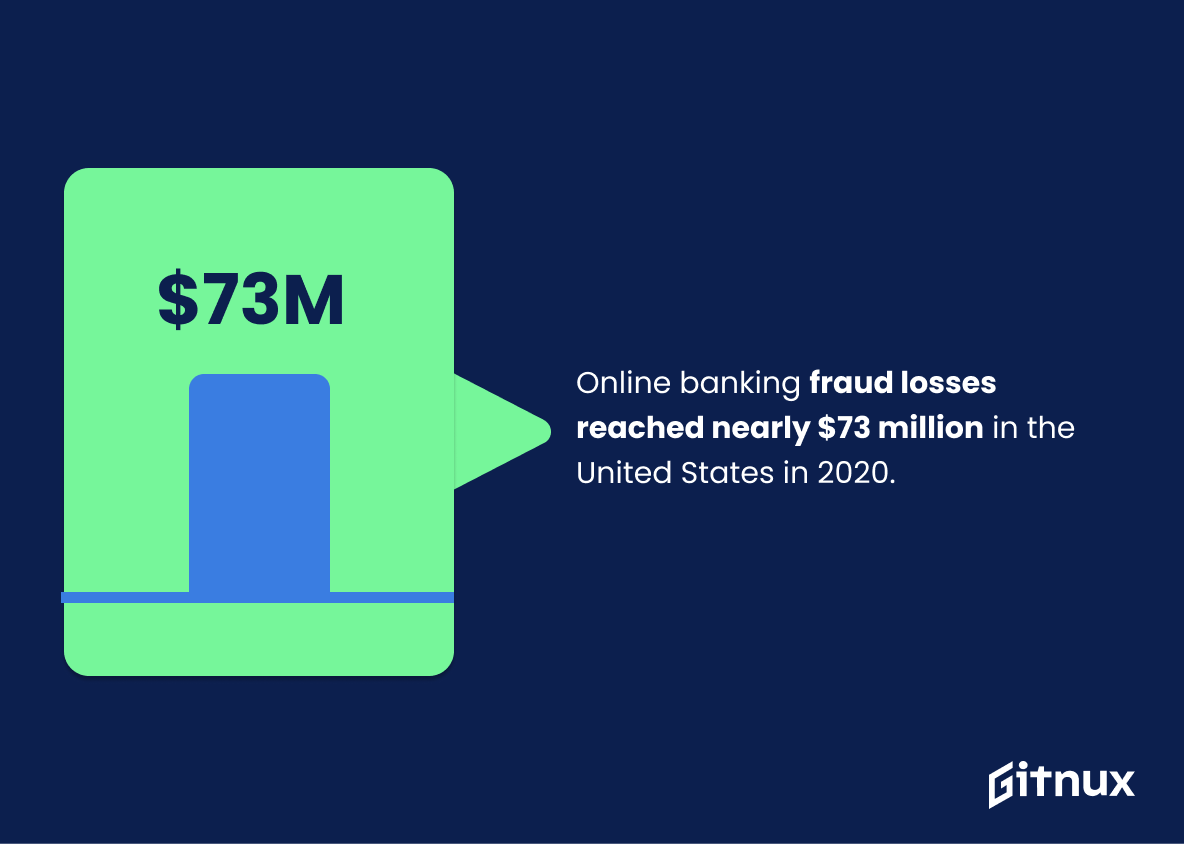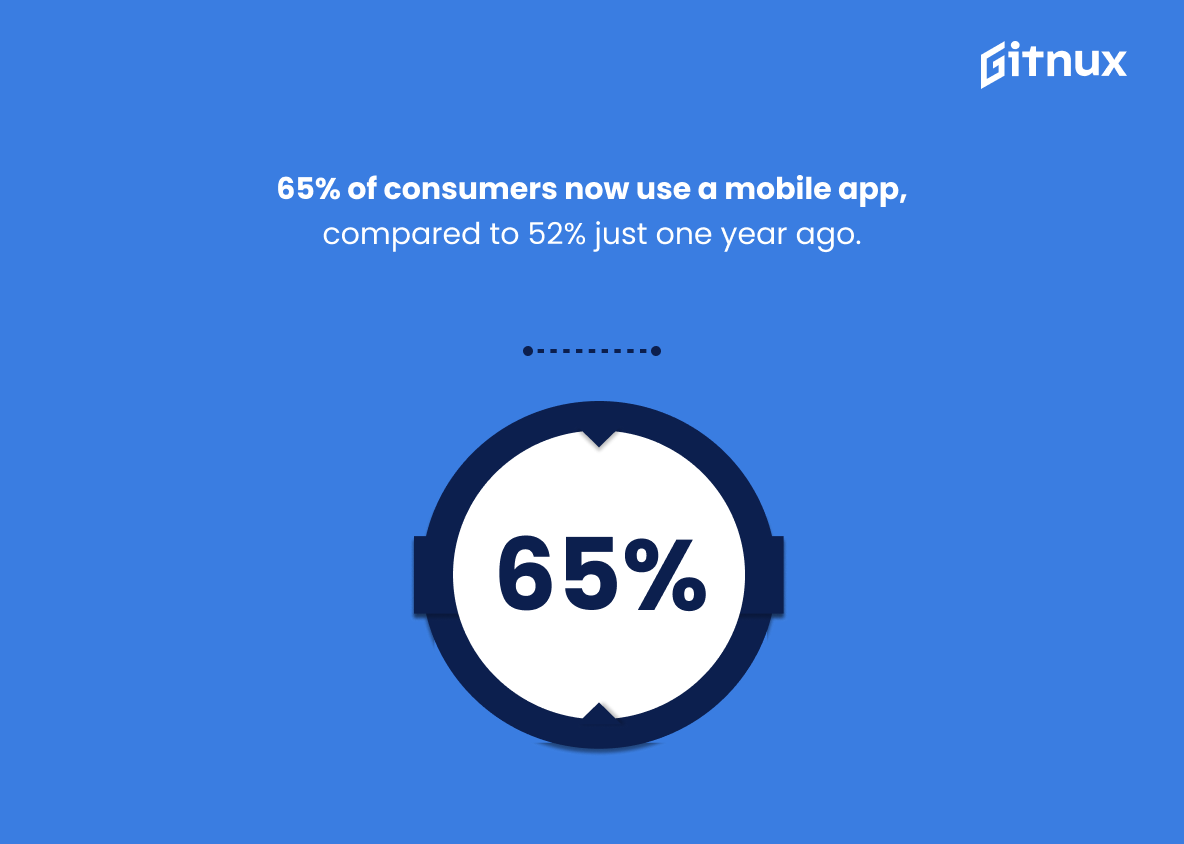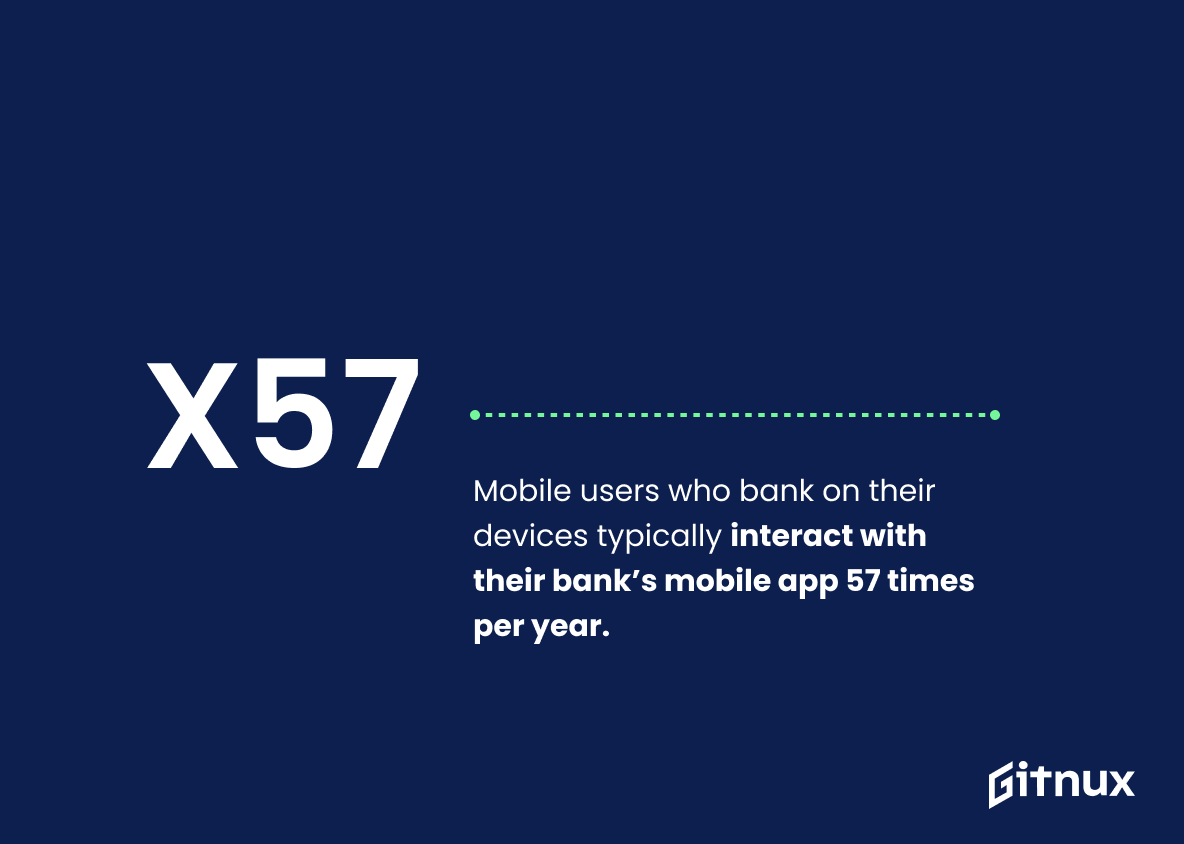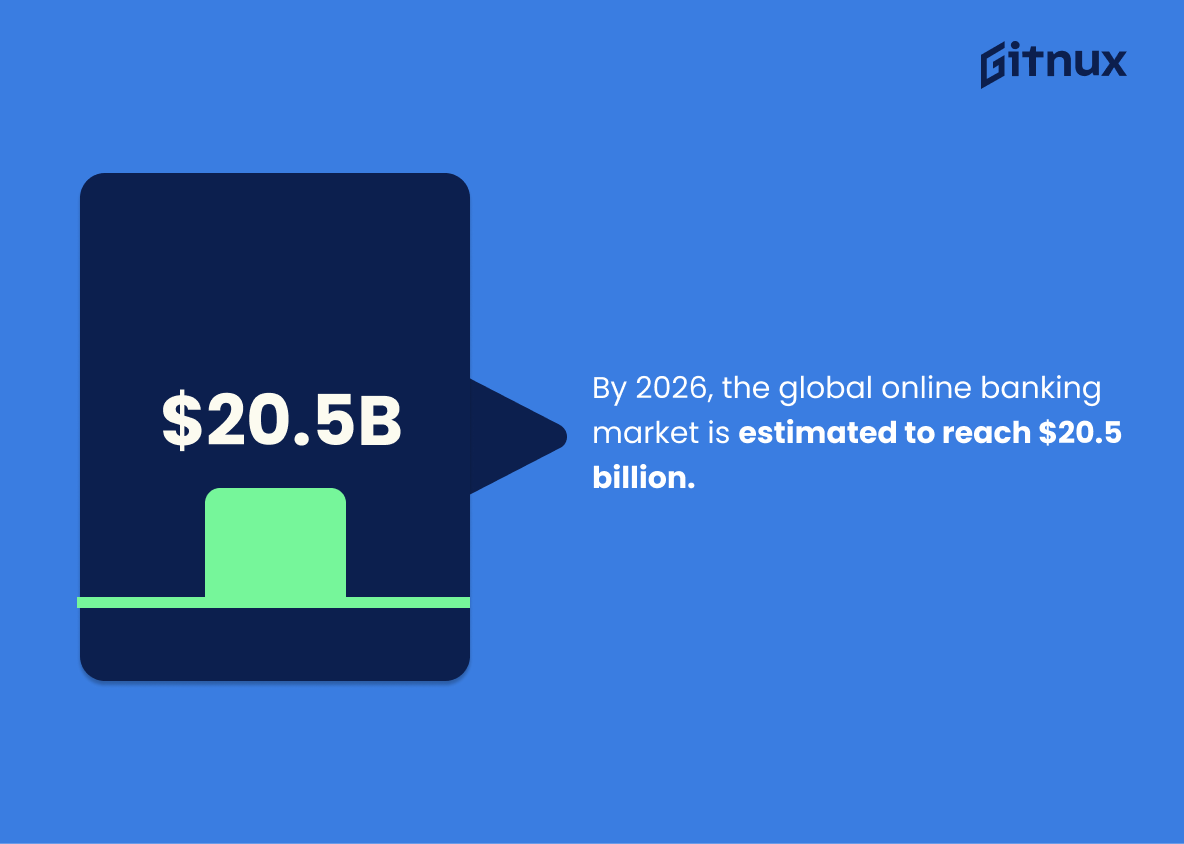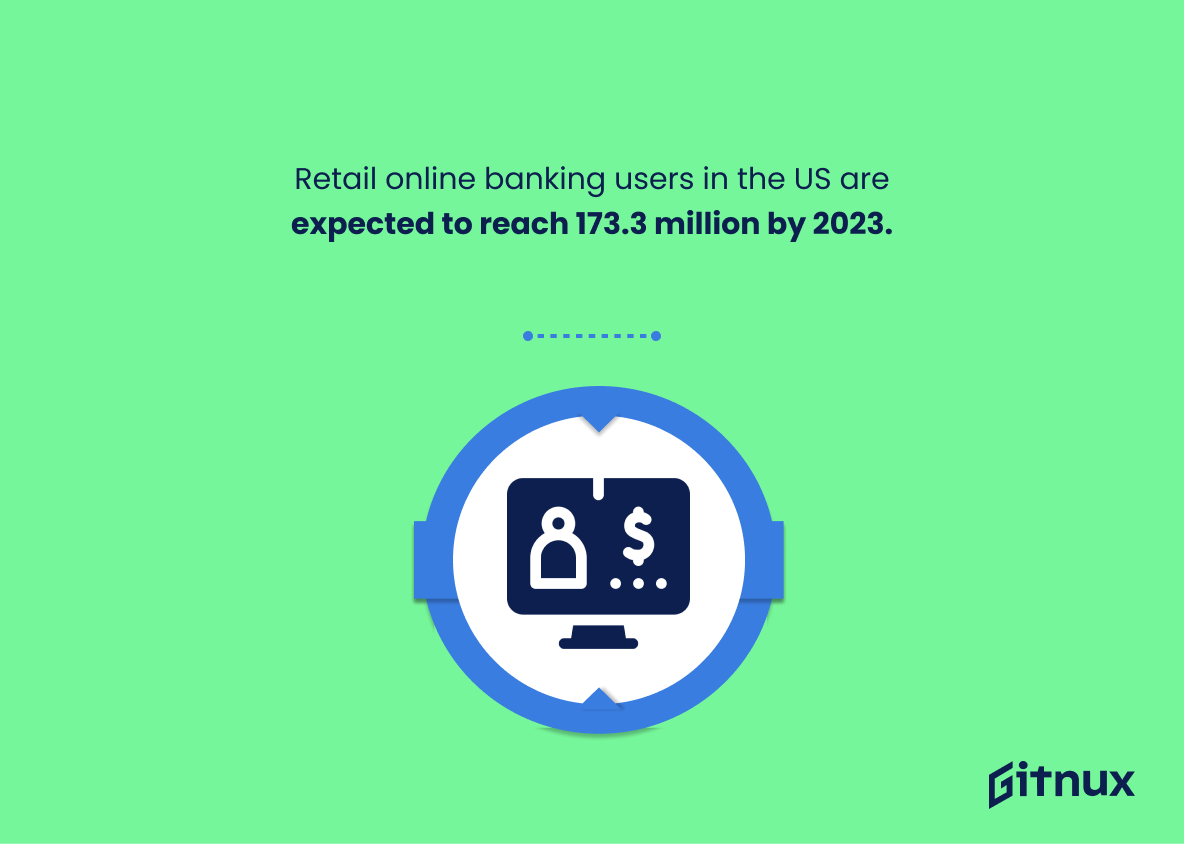The online banking industry is growing rapidly, and with it, the need for accurate and up-to-date statistics. In this blog post, we’ll take a look at some of the most important online banking industry statistics, including the number of online banking users, the amount of money being transferred online, and the growth of mobile banking.
We’ll also discuss the implications of these statistics for the future of the online banking industry. By the end of this post, you’ll have a better understanding of the current state of the online banking industry and the trends that are likely to shape its future.
Online Banking Industry: The Most Important Statistics
Online banking fraud losses in the UK reached 159.7 million British pounds in 2020, showing an increase in the frequency of frauds.
90% of US mobile banking app users checked their account balance in 2019, and 79% used it to view recent transactions.
Online Banking Industry Statistics Overview
Online banking is the most popular form of banking in Asia, with over 805 million users in 2022.
Online banking penetration rate in Norway is 96%, the highest in the world.
Online banking fraud losses in the UK reached 159.7 million British pounds in 2020, showing an increase in the frequency of frauds.
84% of participants in a 2017 UK survey believe that their online banks’ authentication methods work, which is important as it shows that customers have confidence in the security measures taken by banks to protect their accounts.
The usage of digital banking services varies significantly amongst different age groups, with millennials having a higher usage rate (80%) than baby boomers (48.5%).
Thus, targeting different age groups in order to maximize usage of digital banking services is important.
Age is a key determinant in preference between online banking and traditional brick-and-mortar banking, with younger people preferring online services and older age groups preferring in-person banking.
Mobile banking apps are the most popular option for accessing online banking services among younger age groups, with 48% of 18-24 year olds using them weekly or more, compared to only 11% of those 65 or older.
Mobile banking apps are the preferred method of accessing online banking services among younger generations, and banks should therefore focus on developing and improving their mobile banking apps to ensure they remain competitive.
90% of US mobile banking app users checked their account balance in 2019, and 79% used it to view recent transactions.
Digital interactions in banking have increased by 50% compared to pre-pandemic levels. Customers are also open to the idea of using financial products or services from Big Tech companies, which could lead to increased competition in the online banking industry.
Supplementary Statistics
As of 2020, approximately 60% of Americans now use online banking, up from 36% in 2010.
This trend is likely to continue, as the convenience and security of online banking become increasingly attractive to consumers. As such, this statistic is an important indicator of the direction of the online banking industry, and provides valuable insight into the current state of the industry.
North America has the highest online banking penetration rate at 74%.
This is a testament to the success of online banking in North America, indicating that the region has embraced the technology and is leading the way in terms of adoption. It is a clear indication that the online banking industry is thriving in North America, and provides a benchmark for other regions to strive for.
Mobile banking has an adoption rate of 69% among millennials.
It highlights the importance of mobile banking in the online banking industry, and how it is becoming increasingly popular among the younger generation. This statistic is a valuable insight into the current trends in the online banking industry, and can be used to inform decisions about how to best serve the needs of millennials.
Online banking fraud losses reached nearly $73 million in the United States in 2020.
Thus, there is a need for banks and customers alike to take extra precautions to protect their accounts and financial information from fraudsters. It also serves as a warning to those who may be considering using online banking services, as it shows the potential risks associated with such services.
65% of consumers now use a mobile app, compared to 52% just one year ago.
The online banking industry is rapidly evolving and adapting to the changing needs of customers. This is an important statistic to consider when discussing the current state of the online banking industry, as it demonstrates the increasing demand for mobile banking solutions.
48% of US consumers have at least three financial apps installed on their smartphones.
More and more people are turning to their smartphones to manage their finances, which is a clear sign that the online banking industry is thriving.
89% of Americans say they are very or somewhat satisfied with their online banking experience.
The majority of Americans are content with the services they are receiving. It is a powerful indicator of the industry’s ability to provide a satisfactory experience for its customers, and is an important statistic to consider when discussing the online banking industry.
Mobile users who bank on their devices typically interact with their bank’s mobile app 57 times per year.
Mobile banking is becoming increasingly popular, with users engaging with their bank’s mobile app an average of 57 times per year. This is a clear sign that customers are embracing the convenience and security of online banking, and that the industry is continuing to grow.
By 2026, the global online banking market is estimated to reach $20.5 billion.
The market is expected to grow exponentially in the coming years, indicating that the industry is ripe for investment and innovation. This statistic is a clear indication that the online banking industry is on the rise and is set to become a major player in the global financial landscape.
Retail online banking users in the US are expected to reach 173.3 million by 2023.
More and more people are turning to digital banking solutions to manage their finances, which is a clear indication of the industry’s success. This statistic is an important piece of information for anyone interested in the online banking industry, as it provides insight into the current and future trends of the sector.
46% of banks worldwide plan to invest more in technology to improve their digital presence.
As banks invest more in technology, they are able to provide customers with a better digital experience, making online banking more accessible and secure. This is an important development for the industry, as it will help to increase customer satisfaction and loyalty.
45% of banks plan to digitally transform their business by using AI to enhance customer experience.
Banks are taking proactive steps to stay ahead of the curve by leveraging the power of AI to improve customer experience. This is a clear indication that the industry is embracing the digital revolution and is set to become even more competitive in the near future.
The online banking market in Asia-Pacific is projected to grow at a CAGR of 18.6% over the forecast period of 2020 – 2025.
The industry is expected to experience significant growth over the next five years, making it an attractive investment opportunity for those looking to capitalize on the trend. This statistic is especially relevant for a blog post about online banking industry statistics, as it provides readers with a clear indication of the potential of the industry in the region.
Improved accessibility led to 50% of banking customers globally using their devices for a wider range of financial services in 2020.
When customers are given the opportunity to access a wider range of financial services through their devices, they take advantage of it. This highlights the importance of providing customers with the tools they need to manage their finances in a convenient and secure manner. It also demonstrates the potential for online banking to revolutionize the way people interact with their finances.
Over 52% of smartphone users with bank accounts have used mobile banking in the past 12 months.
More and more people are turning to their smartphones to manage their finances. This is an important trend to note for anyone interested in the online banking industry, as it suggests that the industry is continuing to expand and evolve.
The global banking industry’s assets were worth more than $124 trillion in 2020.
It is a staggering figure that speaks to the immense power and influence of the banking sector in the global economy. It also serves as a reminder of the importance of the banking industry in providing financial services to individuals, businesses, and governments around the world.
As of Q1 2021, China had the world’s largest banking sector by assets, amounting to over $47.7 trillion.
This is a powerful reminder of the importance of the Chinese banking sector in the world economy, and its potential to shape the future of banking. It is also a reminder of the need for other countries to keep up with the rapid growth of the Chinese banking sector in order to remain competitive.
In 2020, the number of commercial banks in the United States reduced to 4,750 from 6,799 in 2010.
The number of commercial banks has decreased significantly over the past decade, indicating a consolidation of the banking sector. This could have implications for the availability of banking services, the cost of banking services, and the overall competitive environment of the banking industry.
The US banking industry had consolidated assets of over $21.6 trillion in 2020.
This highlights the immense power and influence that the banking sector has in the US economy, and serves as a reminder of the importance of the banking industry in the lives of everyday Americans. It also serves as a reminder of the importance of regulation and oversight of the banking industry, as such a large amount of money is at stake.
In 2020, the net profit of the banking sector in the European Union was approximately €47.4 billion.
This highlights the impressive financial gains made by the sector, demonstrating the strength of the industry and its ability to generate significant profits. This is an important indicator of the health of the banking sector and provides valuable insight into the performance of the industry.
As of 2020, JP Morgan Chase had the highest market capitalization among banks, approximately $394 billion.
This serves as a reminder of the bank’s financial strength and stability, and its ability to remain competitive in the banking sector. This statistic is a valuable insight into the banking industry, and provides a useful benchmark for other banks to strive for.
In 2020, approximately 43% of US adults banked primarily through digital means.
This shift has implications for the banking industry, as it means that banks must adapt to the changing needs of their customers and provide digital services that are secure and easy to use. As such, this statistic is an important one to consider when discussing the banking industry.
By 2021, mobile banking users worldwide reached approximately 2.02 billion, up from 1.48 billion in 2017.
This is a clear indication that the banking industry is adapting to the digital age, and that customers are increasingly relying on mobile banking to manage their finances. This statistic is a valuable insight into the banking industry and its future prospects.
Around 31.5% of banks in the world offer banking chatbot services in 2021.
More and more banks are recognizing the potential of this technology and are investing in it to provide better customer service and convenience. This is an important development in the banking industry, as it shows that banks are adapting to the changing needs of their customers and are willing to invest in new technologies to stay competitive.
The global investment in fintech was $105.3 billion across 2,861 deals in 2020, which has disrupted traditional banking services.
Investment in fintech is growing rapidly, and it is having a major impact on traditional banking services. This statistic is a clear indication that the banking industry is undergoing a major transformation, and that fintech is playing a major role in this transformation. It is a sign that the banking industry is embracing the power of technology and innovation, and that it is ready to take advantage of the opportunities that fintech presents.
The global Islamic banking sector reached $1.8 trillion in assets in 2019.
This highlights the potential of Islamic banking to become a major player in the banking industry, and serves as a reminder of the need for banks to stay abreast of the latest developments in the sector. Furthermore, it provides a valuable insight into the size and scope of the Islamic banking sector, and can be used to inform decisions about investments and strategies.
In the US, the number of bank branches has decreased from over 99,000 in 2009 to just above 83,000 in 2020.
The number of physical bank branches has decreased significantly over the past decade, indicating a shift away from traditional banking methods and towards digital banking solutions. This shift has had a major impact on the banking industry, and it is important to understand the implications of this trend in order to stay ahead of the curve.
Approximately 5.4% of US households were unbanked in 2019, down from 6.5% in 2017.
More households are now taking advantage of the financial services and products offered by banks, which can help them manage their money more effectively and securely. This is an encouraging sign for the banking industry, as it indicates that more people are recognizing the value of banking services and are taking steps to ensure their financial stability.
Nearly 67% of Canadians primarily used mobile banking in 2021.
This shift has implications for the banking industry, as it means that banks must focus on developing mobile-friendly services and features to meet the needs of their customers. As such, this statistic is an important one to consider when discussing the banking industry and its current trends.
India had one of the highest cash to GDP ratio at 14.42% in 2021, pointing to the role of banking in financial inclusion.
The banking sector has been able to provide access to financial services to a large portion of the population, which is essential for economic growth and development. This statistic is a clear indication that the banking industry in India is making a positive impact on the lives of its citizens.
In 2020, around 72% of banks globally reported adopting digital KYC (Know Your Customer) processes.
Digital KYC processes allow banks to quickly and securely verify customer identities, reducing the time and cost associated with manual KYC processes. This shift towards digital KYC processes is indicative of the banking industry’s willingness to embrace new technologies and provide customers with a more streamlined and secure banking experience.
The fintech lending market had a compound annual growth rate (CAGR) of 15.1% between 2015 and 2020.
This highlights the increasing demand for alternative lending options, as well as the potential for further growth in the banking industry. This statistic is a valuable insight into the banking industry and can be used to inform decisions about investments and strategies.
Microfinance institutions worldwide disbursed loans worth approximately $124 billion in 2019.
This serves as a reminder of the importance of providing access to financial services to those who may not have access to traditional banking services, and the potential for microfinance institutions to continue to grow and expand their reach.
The retail banking sector was forecasted to hold a 52% share of the blockchain financial service market by 2021.
The banking industry is embracing the technology and is likely to continue to do so in the future. This could have a significant impact on the way banking services are delivered, potentially leading to more efficient and secure transactions. As such, this statistic is an important one to consider when discussing the banking industry and its future prospects.
In 2020, Latin America registered an 11% decline in the number of physical bank branches.
This shift has implications for the banking industry, as it could lead to a decrease in customer service and a decrease in the availability of banking services in certain areas. It is important to consider this statistic when discussing the banking industry in Latin America, as it provides insight into the changing dynamics of the industry.
Conclusion
In conclusion, the online banking industry is growing rapidly and is expected to continue to do so in the coming years. With the increasing number of customers using online banking services, it is important for financial institutions to stay ahead of the curve and keep up with the latest trends and developments in the industry.
By understanding the current industry statistics, financial institutions can better prepare for the future and ensure that they are providing the best services possible for their customers.
References
1 – https://www.statista.com/statistics/1228757/online-banking-users-worldwide/
2 – https://www.statista.com/forecasts/1169529/online-banking-penetration-by-country
3 – https://www.statista.com/statistics/326169/united-kingdom-uk-online-banking-losses/
4 – https://www.statista.com/statistics/786610/online-banking-authentication-security-perception-united-kingdom/
5 – https://www.bankrate.com/banking/digital-banking-trends-and-statistics/#:~:text=Nearly%20two%2Dthirds%20(65.3%20percent,by%204%20percent%20since%202018.
6 – https://safeatlast.co/blog/online-banking-statistics/
7 – https://www.statista.com/statistics/934467/frequency-mobile-banking-app-use-usa/
8 – https://www.statista.com/statistics/934476/reasons-for-using-mobile-banking-apps-usa/
9 – https://newsroom.accenture.com/news/rapid-shift-to-digital-banking-during-covid-19-accelerating-erosion-in-consumer-trust-accenture-report-finds.htm
10 – https://www.mckinsey.com
11 – https://www.globenewswire.com
12 – https://www.ncr.com
13 – https://www2.deloitte.com
14 – https://www.mordorintelligence.com
15 – https://www.emarketer.com
16 – https://www.money-rates.com
17 – https://www.statista.com
18 – https://www.nielsen.com
19 – https://www.fisglobal.com
20 – https://www.pwc.com
21 – https://www.kiva.org
22 – https://fred.stlouisfed.org
23 – https://www2.deloitte.com
24 – https://www.capgemini.com
25 – https://www.statista.com
26 – https://fortunly.com
